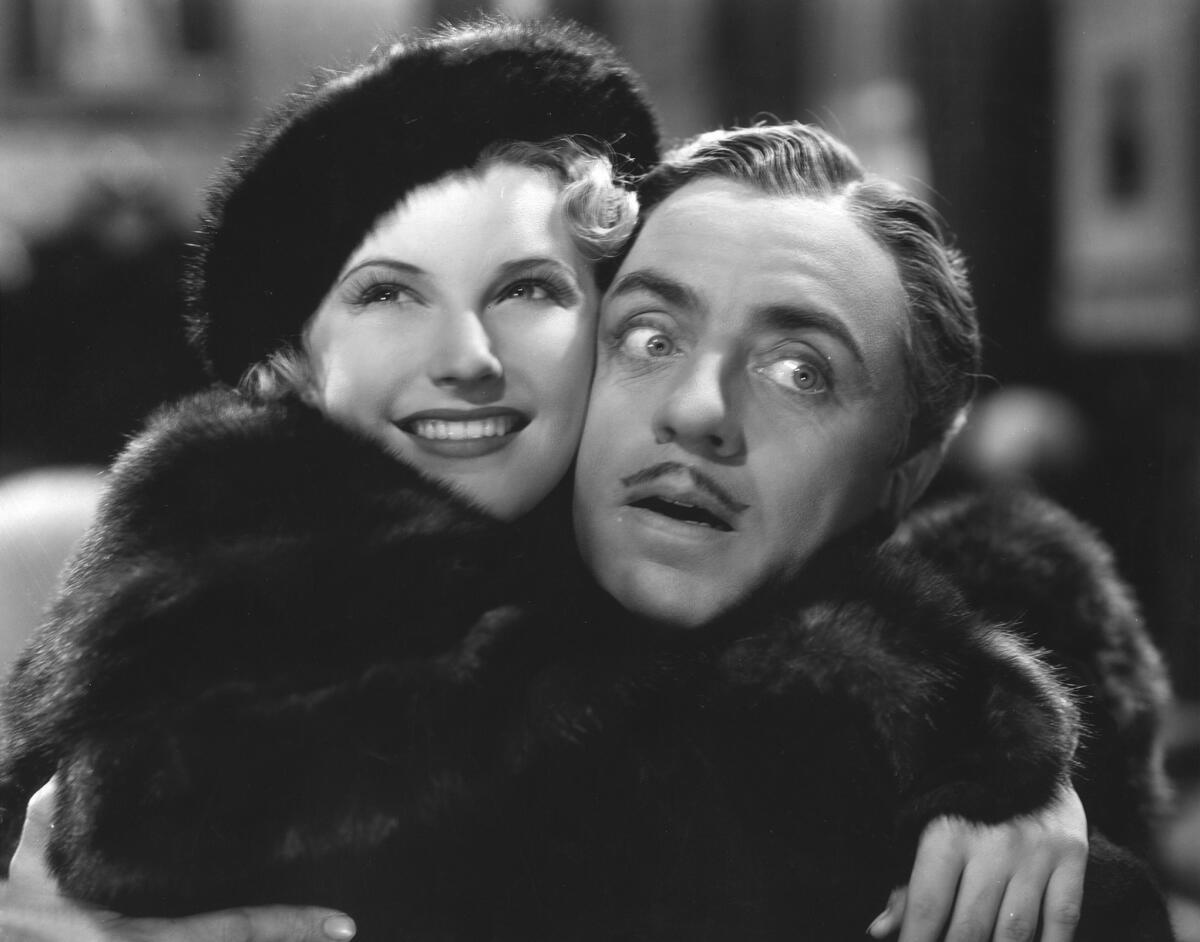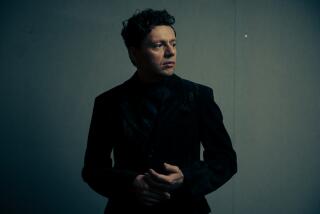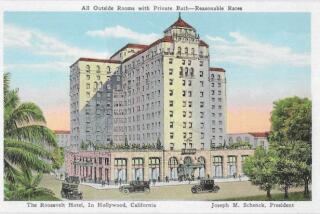From the Archives: ‘The Great Ziegfeld’ film premiere revives thrill of other days

- Share via
The splendor and the thrill of other days of premiere giving were revived last night at the Carthay Circle Theater.
First presentation of “The Great Ziegfeld” surpassed even the highest expectations in the size of the crowd and the glamour of the event. A three-hour film production pursued its way on the screen while an eager throng looked on and retained its enthusiasm until the close.
BREAKS PRECEDENT
This particular creation of the cinema breaks all precedent for length, yet such is its spectacular quality and so beautiful are its musical numbers that there is no sense of tedium. Even the story sustains itself amazingly well.
“The Great Ziegfeld” enjoyed the benefit of as lavish an opening as Hollywood ever has bestowed and it unquestionably merits this to a very high degree. Everything was done to make its advent festive.
Even street display was resorted to with models attired in the more elaborate costumes appearing in a tableau along the main esplanade leading up to the theater.
CROWD THERE EARLY
Sightseers gathered early in the day because few have had such a chance as this to witness the arrival of the stars on a gala occasion. And there haven’t been many instances even in the old days when so many leading luminaries lent the brilliance of their presence to an event of this kind.
The microphone was kept busy constantly with salutations from the arriving celebrities. Norma Shearer, Leslie Howard, Luise Rainer, William Powell, Jeanette MacDonald, Gene Raymond, Bruce Cabot, Adrienne Ames and many others were seen.
In most cases the speeches they made were carefully prepared. More seriousness surrounded this particular occasion than the usual “Hello, everybody,” which has prevailed so often at the premiere.
Owing to the length of “The Great Ziegfeld” the program was practically held to this presentation. An orchestral selection was given just before the feature started in order to give the late comers time to get seated.
“The Great Ziegfeld” is pre-eminently the story of splendid musical entertainment in America as typified by its title character. In a way it is a sort of memorial glorification of the man who did much to glorify.
Certainly the production out-Ziegfelds Ziegfeld in the climaxing number of the first part — it immediately precedes an intermission — “A Pretty Girl Is Like a Melody.”
COST $250,000
It is said this particular sequence cost $250,000 and it can well be believed.
The set alone is a monumental affair and is simply the background for seeming myriads of beauties. Slowly the camera winds up a sort of stairway on this white pyramid until the top is reached and there it draws back while you glimpse the entire ivory structure against the background of stars.
There is no other musical number to equal this in the production, although many others even in pretentious films would be regarded as very fine.
Particularly remarkable is the dancing number, in which six Russian wolfhounds are seen moving in perfect time slowly across the stage. They don’t actually dance but they might as well be doing so.
ABLE ACTING
You’ll find yourself surprisingly fascinated by the delineation of Ziegfeld as offered by William Powell. His able acting is particularly to be commended in the later scenes where so much depends on his perfect sustaining of the character. There is a really matchless little episode between Frank Morgan and himself right toward the end.
The picture is full of anachronisms unquestionably and it has Ziegfeld’s death taking place in New York rather than in Hollywood. Furthermore, Anna Held’s career in so far as it is related to the producer lasts much longer than history would bear out. I doubt, however, that many of the general public will be aware of these details of facts, which are distorted.
DIFFICULT ROLE
Luise Rainer as Anna Held does one of the most difficult of interpretations. The character has been much softened and Miss Rainer is full of charm in the role. Myrna Loy is not Billie Burke but gives a very competent performance. Fannie Brice contributes importantly to the comedy. Ray Bolger’s dancing is very good. In fact quite excellent. Reginald Owen, Joseph Cawthorne, Ernest Cossart and Nat Pendleton as Sandow are others seen.
Robert Z. Leonard directed and Hunt Stromberg produced, while story and screen play were written by William Anthony McGuire.
More to Read
Only good movies
Get the Indie Focus newsletter, Mark Olsen's weekly guide to the world of cinema.
You may occasionally receive promotional content from the Los Angeles Times.










